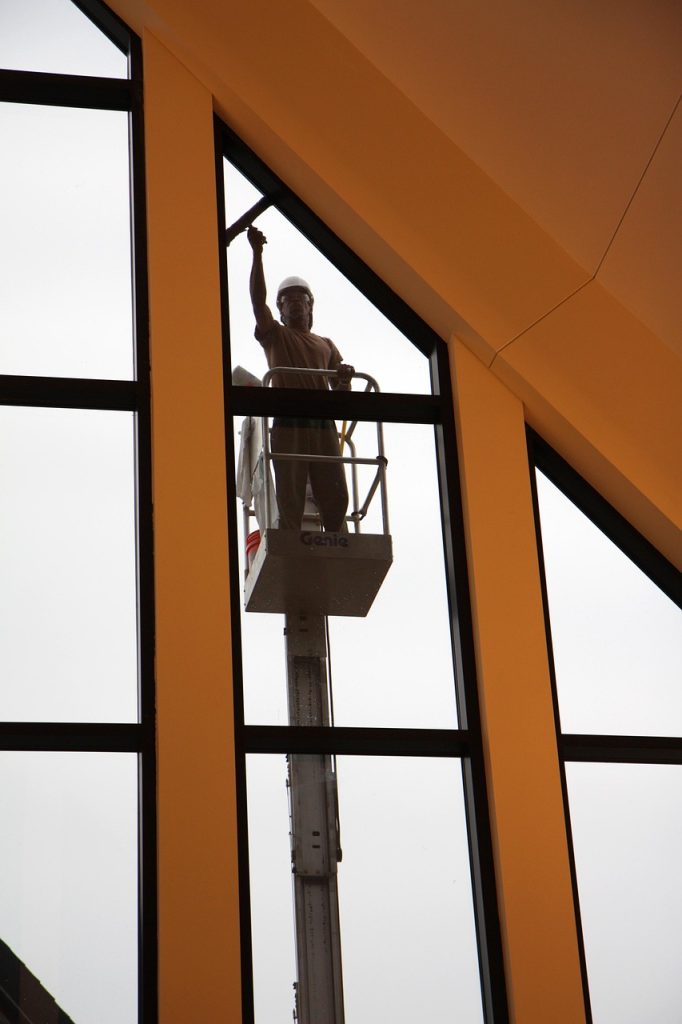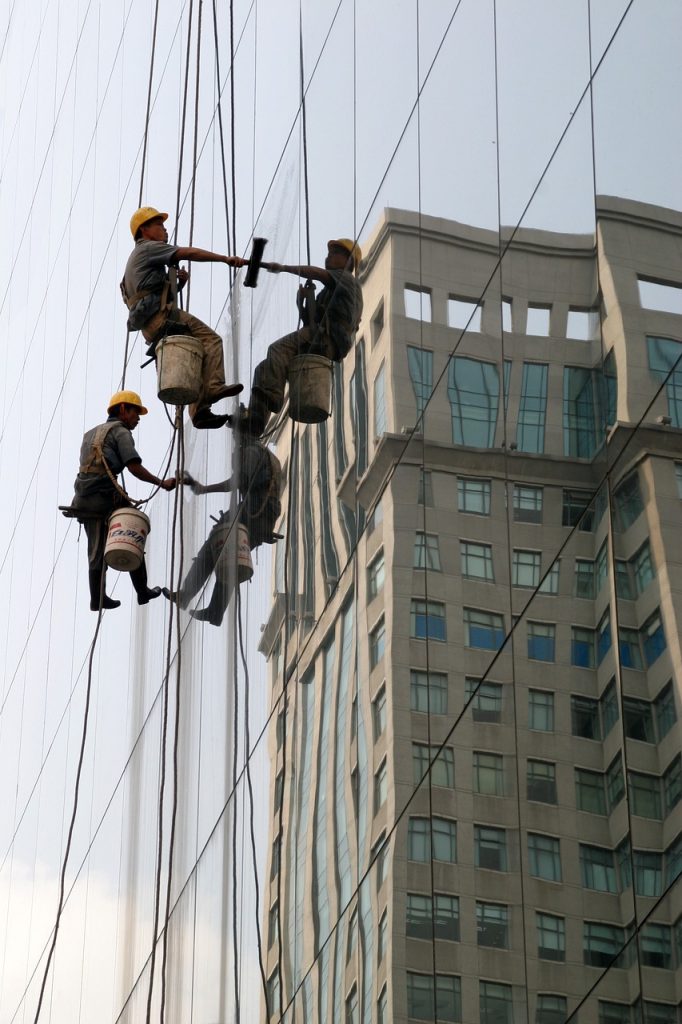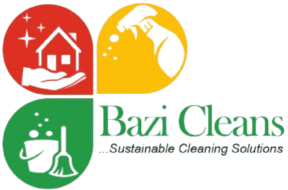Expert Cleaning Tips and Safety Measures for Commercial Window Cleaning
Maintaining clean windows in commercial spaces is vital for creating a professional look and ensuring a pleasant environment for employees and customers. Regular window cleaning boosts aesthetics and prevents damage caused by accumulated dirt and environmental elements. However, it requires the right cleaning techniques and strict adherence to cleaning safety measures to be both effective and accident-free.
Understanding the Importance of Commercial Window Cleaning
Clean windows contribute to the overall hygiene, comfort, and appeal of a commercial space. Whether it’s an office building, retail store, or high-rise property, dirty and streaked windows create a negative impression on clients and visitors. Additionally, accumulated dust and debris can damage window surfaces over time, leading to costly repairs or replacements. Maintaining a regular cleaning schedule ensures longevity and preserves the integrity of glass panels.
Top Commercial Window Cleaning Techniques
1. Invest in Quality Cleaning Equipment
To achieve spotless windows, use high-quality cleaning tools such as squeegees, microfiber cloths, extension poles, and professional-grade glass cleaners. The right cleaning tools ensure efficiency and prevent potential damage to glass surfaces. Extension poles and water-fed pole systems are handy for cleaning high or hard-to-reach windows without the need for ladders.
2. Select the Appropriate Cleaning Solutions
Commercial-grade glass cleaners effectively remove stubborn grime, but an eco-friendly alternative, such as a vinegar and water mixture, works well too. Avoid harsh cleaning chemicals that may leave streaks or harm window coatings. Additionally, ammonia-based cleaners should be used with caution as they can damage window tint and coatings over time.
3. Clean Under Ideal Weather Conditions
Bright sunlight can cause cleaning solutions to dry too fast, resulting in streaks. To get the best cleaning outcome, schedule window cleaning on an overcast day or during early morning or late afternoon hours. Cleaning on windy days can also lead to uneven drying and excessive water consumption.
4. Start from the Top and Work Downward
Cleaning from the top ensures that drips don’t dirty already-cleaned sections. This cleaning approach leads to a uniform, streak-free finish. Additionally, using horizontal strokes on one side of the glass and vertical strokes on the other can help identify and eliminate streaks effectively.
5. Use a Squeegee Effectively
For clear windows, hold the squeegee at an angle and move it in smooth, consistent cleaning strokes. Wipe the blade with a clean cloth between strokes to prevent cleaning streaks and smudges. Replacing squeegee blades regularly ensures a smooth, even finish without leaving behind water marks.
6. Don’t Neglect Frames and Sills
Dust and debris often accumulate in window frames and sills. Wiping or vacuuming these areas before cleaning the glass prevents dirt from spreading during cleaning. Neglecting these areas can lead to mold growth and deterioration over time, impacting both air quality and structural integrity.
Advanced Commercial Window Cleaning Techniques
7. Using Water-Fed Pole Systems
For cleaning windows on multi-story buildings, water-fed pole systems allow for efficient cleaning with purified water. These systems remove mineral deposits and prevent streaking without the need for chemical cleaners.
8. Utilizing Pressure Washing for Exterior Windows
For heavily soiled exterior windows, pressure washing can help remove tough dirt and grime. However, this method should be used with caution to avoid damaging window seals and frames.

9. Implementing Routine Maintenance Schedules
Establishing a regular cleaning schedule based on location and environmental factors ensures windows remain in top condition year-round. High-traffic areas or properties in urban environments may require more frequent cleaning than others.
Essential Cleaning Safety Precautions for Commercial Window Cleaning
1. Wear Appropriate Cleaning Safety Gear
Gloves, safety goggles, and non-slip footwear protect against chemical exposure and slipping hazards during cleaning. If working at heights, a harness and helmet provide additional cleaning security. Proper protective gear minimizes risks associated with exposure to cleaning chemicals and potential falls.
2. Secure Ladders and Scaffolding
For high windows, ensure ladders and scaffolding are stable and properly secured before cleaning. Follow manufacturer guidelines for weight limits and positioning to prevent cleaning accidents. Always use ladder stabilizers and secure ladders on level ground to prevent tipping.

3. Adhere to OSHA Cleaning Regulations
Following Occupational Safety and Health Administration (OSHA) cleaning guidelines is crucial. This includes ensuring proper training, using fall protection systems, and following ladder safety protocols during cleaning. Employers should provide regular safety training and ensure compliance with local regulations.
4. Check Weather Conditions Before Cleaning
Harsh weather, such as strong winds, rain, or ice, can make window cleaning hazardous. Always review weather forecasts and reschedule window cleaning if conditions are unsafe. Windy conditions can increase the risk of falls, while rain and ice can make surfaces slippery and difficult to clean.
5. Work in Cleaning Teams
Having a partner increases cleaning safety, especially when working at heights. A teammate can stabilize cleaning equipment and provide immediate assistance in case of a cleaning emergency. Team-based cleaning also improves efficiency and ensures thorough results.
6. Use Rope Descent Systems for High-Rise Cleaning
For high-rise buildings, specialized rope descent systems (RDS) or suspended scaffolding should be used. Only trained professionals should operate these systems to ensure safety.
Common Mistakes to Avoid in Commercial Window Cleaning
- Using Dirty Cleaning Cloths or Squeegees: Always use clean, lint-free microfiber cloths and replace squeegee blades regularly to avoid streaking.
- Skipping Pre-Cleaning Steps: Removing dust and debris before applying a cleaning solution prevents dirt from spreading and ensures better results.
- Ignoring Safety Procedures: Failure to secure ladders or wear safety gear increases the risk of accidents and injuries.
- Overusing Cleaning Products: Excessive use of cleaning solutions can leave behind residue, attracting more dirt over time.
Eco-Friendly Commercial Window Cleaning Practices
- Using Biodegradable Cleaning Products: Opt for non-toxic, biodegradable cleaners to reduce environmental impact.
- Conserving Water: Use water-efficient methods such as water-fed pole systems with filtration to minimize water waste.
- Reducing Paper Towel Waste: Reusable microfiber cloths are more effective and sustainable than disposable paper towels.
Conclusion
Commercial window cleaning is an essential aspect of building upkeep that requires proper cleaning techniques and strict cleaning safety measures. Using the right cleaning tools and cleaning practices ensures spotless windows while prioritizing worker cleaning safety. Whether hiring professionals or managing the cleaning task internally, focusing on efficiency and precautionary cleaning measures leads to optimal cleaning results.
A well-maintained window cleaning routine not only improves the overall appearance of a commercial space but also prolongs the lifespan of the windows, reduces maintenance costs, and ensures a safer working environment. With a combination of proper techniques, high-quality equipment, and adherence to safety protocols, businesses can maintain clean, streak-free windows that enhance their professional image.
